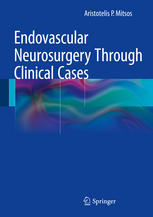

Most ebook files are in PDF format, so you can easily read them using various software such as Foxit Reader or directly on the Google Chrome browser.
Some ebook files are released by publishers in other formats such as .awz, .mobi, .epub, .fb2, etc. You may need to install specific software to read these formats on mobile/PC, such as Calibre.
Please read the tutorial at this link: https://ebookbell.com/faq
We offer FREE conversion to the popular formats you request; however, this may take some time. Therefore, right after payment, please email us, and we will try to provide the service as quickly as possible.
For some exceptional file formats or broken links (if any), please refrain from opening any disputes. Instead, email us first, and we will try to assist within a maximum of 6 hours.
EbookBell Team

4.3
8 reviewsEndovascular neurosurgery is a recently introduced but rapidly evolving medical field, which uses minimally invasive interventions to treat major life-threatening vascular lesions of the Central Nervous System. Although its history counts less than 15 years of worldwide acceptance, it has rapidly displaced the traditional open neurosurgical techniques, being nowadays the first treatment choice for brain aneurysms and vascular malformations. Thus, the experience of each neuroendovascular center and performer is invaluable, offering the base for learning and teaching the new generation of interventionalists as well as for the evolvement of the method itself.
This book presents the basic principles of endovascular neurosurgery starting from clinical cases. Through this close-to-clinical-reality-process, the reader will be able to more thoroughly understand the pathophysiology of the brain and spine vascular lesions as well as the decision-making strategy, related to the indications, endovascular methods and results, finding suggestions and solutions to his/her clinical questions and problems. Besides chapters devoted to CNS vascular embryology and anatomy, clinical cases organized in groups based on the treated lesions are introduced: ruptured and unruptured cerebral aneurysms of the anterior and posterior circulation, side-wall and bifurcation aneurysms, arteriovenous malformations (AVM), dural arteriovenous fistulae (dAVF), arterial stenosis and angioplasty as well as spinal vascular lesions. A separate chapter is devoted to the organization and necessary equipment of the angio room and the department offering neuroendovascular service.
This volume will be of interest to neurosurgeons, interventional neuroradiologists, vascular surgeons, neurologists and ICU physicians as well as health care providers who are involved in the diagnosis and management of the vascular lesions of the brain and spine.